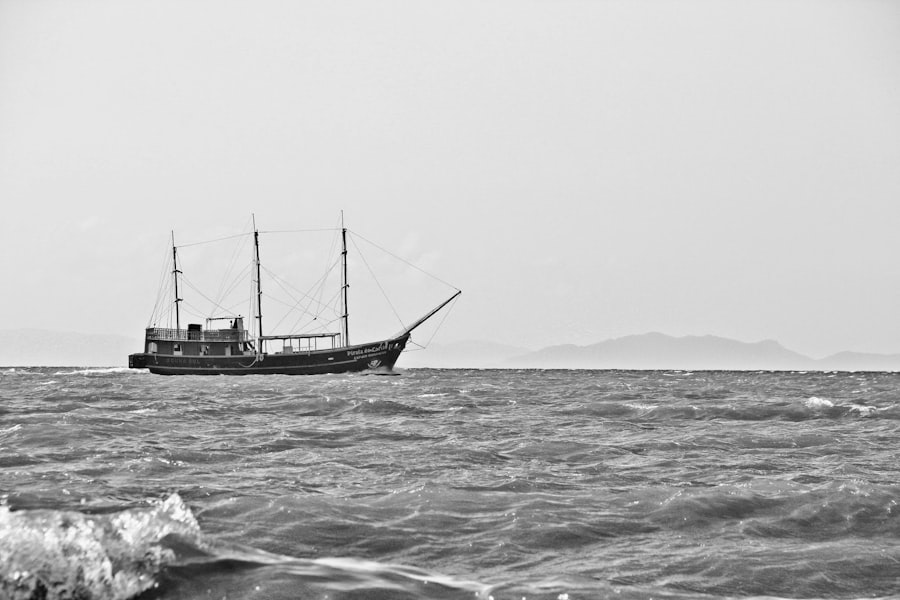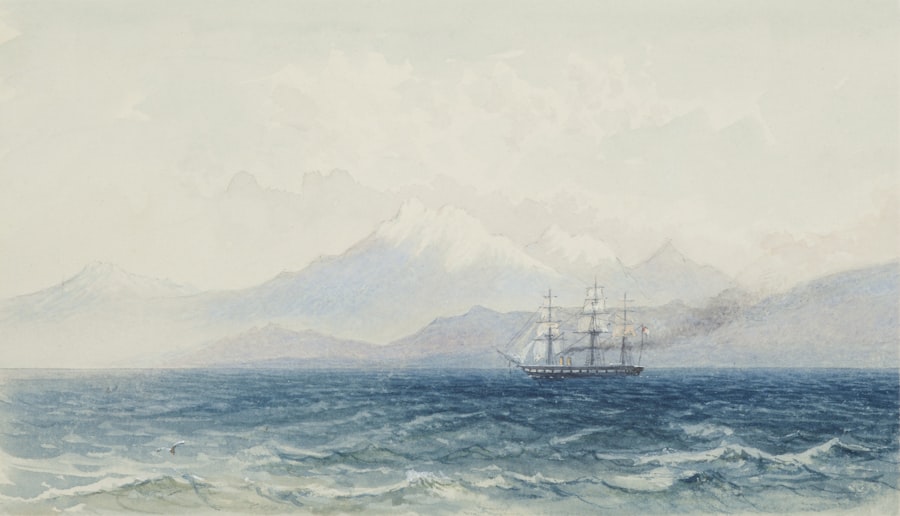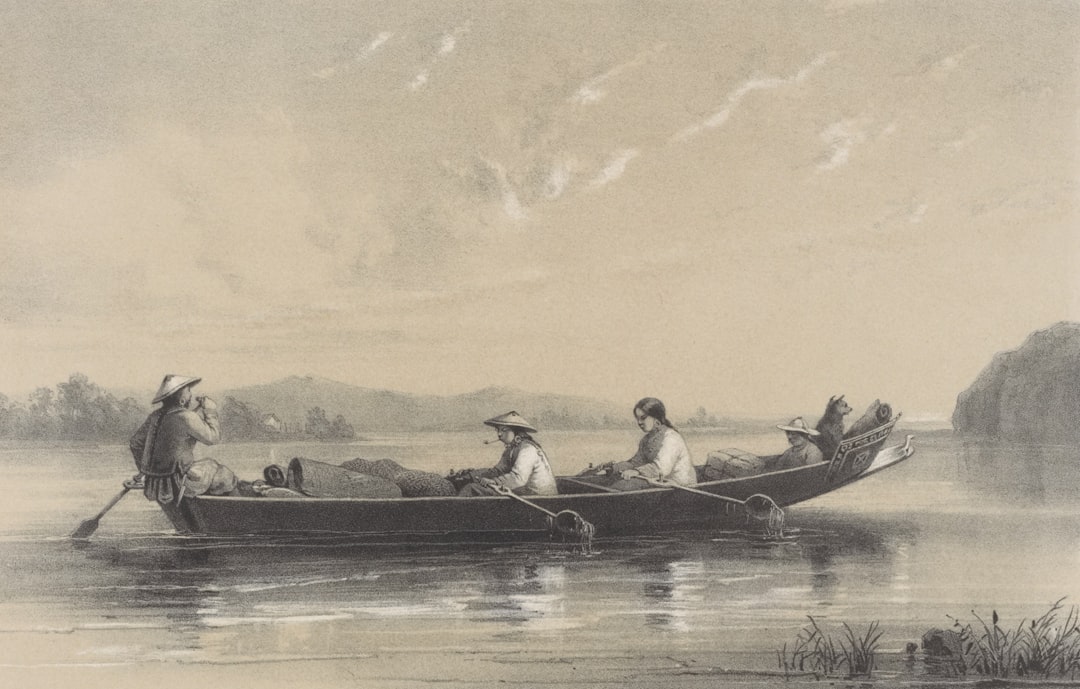The Drake Passage, a body of water situated between the southern tip of South America and Antarctica, is renowned for its tumultuous seas and unpredictable weather patterns. This narrow stretch of ocean, measuring approximately 800 kilometers in width, serves as a critical conduit for maritime traffic between the Atlantic and Pacific Oceans. Named after the English explorer Sir Francis Drake, who navigated these waters in the late 16th century, the passage is not only a geographical marvel but also a significant area for scientific research and exploration.
Its unique position makes it a vital area for understanding global climate patterns, ocean currents, and marine biodiversity. The Drake Passage is often characterized by its fierce winds and high waves, which can pose significant challenges to even the most seasoned mariners. The confluence of the cold waters from the Southern Ocean and the warmer waters from the Atlantic creates a dynamic environment that is both fascinating and perilous.
As such, it has become a focal point for various nations seeking to explore its depths and understand its ecological significance. The passage is not merely a physical barrier; it represents a gateway to one of the last frontiers on Earth, where human curiosity meets the raw power of nature.
Key Takeaways
- The Drake Passage is a treacherous body of water located between South America’s Cape Horn and the South Shetland Islands of Antarctica.
- Chinese expeditions in the Drake Passage have a rich history dating back to the early 20th century, with a focus on scientific research and exploration.
- Navigating the Drake Passage presents numerous challenges, including extreme weather conditions, strong winds, and unpredictable seas.
- Proper preparation and planning are essential for Chinese expeditions in the Drake Passage, including thorough research, experienced crew, and suitable vessels.
- Technology plays a crucial role in navigating the Drake Passage, with advanced navigation systems, satellite communication, and weather forecasting aiding in safe passage.
History of Chinese Expeditions in the Drake Passage
Chinese expeditions in the Drake Passage have a relatively recent history compared to other maritime nations. However, China’s interest in this region has grown significantly over the past few decades, driven by a desire to expand its scientific research capabilities and enhance its presence in polar regions. The first notable Chinese expedition to the Drake Passage occurred in the early 2000s, coinciding with China’s broader strategy to assert its influence in global maritime affairs.
This initial foray laid the groundwork for subsequent missions aimed at studying the unique marine ecosystems and climate dynamics of the area. As China’s capabilities in polar research have advanced, so too has its commitment to exploring the Drake Passage. The establishment of research stations and partnerships with international organizations has facilitated a deeper understanding of this challenging environment.
Chinese scientists have embarked on numerous voyages to collect data on oceanographic conditions, marine life, and environmental changes. These expeditions not only contribute to global scientific knowledge but also reflect China’s growing ambitions in polar exploration and its recognition of the strategic importance of the Drake Passage.
Challenges of Navigating the Drake Passage

Navigating the Drake Passage presents a myriad of challenges that can test even the most experienced crews. The passage is notorious for its rough seas, with waves often reaching heights of over 10 meters during storms. These conditions can lead to dangerous situations for vessels attempting to traverse the waters, making careful planning and execution essential.
The unpredictable weather patterns, characterized by rapid changes in wind direction and intensity, further complicate navigation efforts. Mariners must remain vigilant and adaptable, ready to respond to sudden shifts that could jeopardize their safety. In addition to the physical challenges posed by the environment, there are also logistical hurdles that must be addressed.
The remoteness of the Drake Passage means that access to support services is limited, requiring expeditions to be self-sufficient for extended periods. This isolation can complicate communication and coordination with other vessels or land-based support teams. Furthermore, the need for specialized equipment and training to handle extreme conditions adds another layer of complexity to any expedition planning.
As such, navigating the Drake Passage demands not only skill and experience but also thorough preparation and resourcefulness.
Preparation and Planning for the Chinese Expedition
| Preparation and Planning for the Chinese Expedition | |
|---|---|
| Expedition Start Date | June 15, 2022 |
| Expedition End Date | July 30, 2022 |
| Number of Team Members | 12 |
| Equipment Prepared | Tents, Climbing Gear, Communication Devices |
| Route Planning | Through Himalayan Mountains |
Preparation for a Chinese expedition in the Drake Passage involves meticulous planning and coordination among various stakeholders. The process begins with defining clear objectives for the mission, whether they pertain to scientific research, environmental monitoring, or resource exploration. Once these goals are established, teams must conduct extensive research on prevailing weather patterns, ocean currents, and potential hazards in the area.
This information is crucial for developing a safe and effective navigation strategy that minimizes risks while maximizing data collection opportunities. Logistical considerations are equally important in expedition planning. This includes securing appropriate vessels equipped with advanced technology capable of withstanding harsh conditions.
Additionally, assembling a skilled crew with expertise in polar navigation and scientific research is essential for ensuring mission success. Training exercises may be conducted to prepare team members for potential emergencies or unexpected challenges they may encounter during their journey. By investing time and resources into thorough preparation, Chinese expeditions can enhance their chances of achieving their objectives while ensuring the safety of all personnel involved.
The Role of Technology in Navigating the Drake Passage
Technology plays a pivotal role in enhancing navigation through the treacherous waters of the Drake Passage. Modern vessels are equipped with sophisticated navigation systems that utilize satellite technology, radar, and sonar to provide real-time data on weather conditions, sea state, and underwater topography. These tools enable crews to make informed decisions about their routes and adjust their plans as necessary to avoid dangerous situations.
The integration of advanced communication systems also allows for constant contact with support teams on land or other vessels, facilitating coordination and information sharing. In addition to navigation technology, scientific instruments are crucial for collecting data during expeditions in the Drake Passage. Autonomous underwater vehicles (AUVs) and remotely operated vehicles (ROVs) are increasingly being used to explore underwater ecosystems and gather information on marine life without putting human divers at risk.
These technologies enable researchers to conduct detailed studies of previously inaccessible areas, contributing valuable insights into the ecological dynamics of this unique environment. As technology continues to evolve, it will undoubtedly play an even more significant role in future expeditions, enhancing both safety and scientific discovery.
Wildlife and Environmental Conservation in the Drake Passage

The Drake Passage is home to a diverse array of wildlife that thrives in its cold waters, making it an area of significant ecological importance. Species such as whales, seals, penguins, and various seabirds inhabit this region, relying on its rich marine resources for survival. The unique interplay between ocean currents and nutrient availability creates an environment conducive to high levels of biological productivity.
As such, understanding and conserving this delicate ecosystem is paramount for maintaining biodiversity and ensuring the health of marine life. Chinese expeditions in the Drake Passage often incorporate environmental conservation efforts into their research agendas. By studying marine ecosystems and monitoring changes over time, scientists can identify potential threats posed by climate change, pollution, or overfishing.
Collaborative initiatives with international organizations focused on conservation can further enhance these efforts by promoting sustainable practices and raising awareness about the importance of protecting this fragile environment. Through their research and advocacy, Chinese expeditions contribute not only to scientific knowledge but also to global efforts aimed at preserving the ecological integrity of the Drake Passage.
Cultural and Scientific Significance of the Drake Passage
The cultural significance of the Drake Passage extends beyond its geographical boundaries; it embodies centuries of exploration and human endeavor.
The passage has inspired narratives of bravery and resilience as individuals sought to navigate its treacherous waters in pursuit of knowledge or trade routes.
Today, it continues to captivate researchers and adventurers alike, representing both a challenge and an opportunity for scientific inquiry. From a scientific perspective, the Drake Passage holds immense value as a natural laboratory for studying climate change and oceanography. Its unique position at the convergence of different oceanic systems allows researchers to observe how global phenomena impact local environments.
The data collected from expeditions can provide insights into broader trends affecting marine ecosystems worldwide. As such, understanding the dynamics of the Drake Passage is crucial not only for regional conservation efforts but also for addressing global environmental challenges.
Chinese Research and Exploration in the Drake Passage
Chinese research initiatives in the Drake Passage have expanded significantly over recent years as part of China’s broader commitment to polar exploration. These expeditions focus on various scientific disciplines, including oceanography, marine biology, climatology, and geology. By deploying advanced research vessels equipped with cutting-edge technology, Chinese scientists aim to gather comprehensive data that contributes to global understanding of climate change impacts on polar regions.
By working alongside scientists from other countries, Chinese researchers can share knowledge, resources, and expertise while fostering goodwill in polar exploration endeavors. Joint projects often lead to more robust findings and enhance cross-cultural understanding among nations engaged in similar pursuits.
As China continues to invest in its polar research capabilities, it is likely that its contributions will play an increasingly prominent role in shaping our understanding of this critical region.
Safety and Security Measures for the Chinese Expedition
Safety is paramount during any expedition in the challenging environment of the Drake Passage. Chinese expeditions prioritize comprehensive safety protocols designed to protect crew members from potential hazards associated with navigating these treacherous waters. This includes conducting thorough risk assessments prior to departure and implementing contingency plans for various emergency scenarios that may arise during the journey.
Training programs focused on safety procedures are essential components of expedition preparation. Crew members undergo rigorous training that covers everything from emergency response protocols to survival techniques in extreme conditions. Additionally, vessels are equipped with state-of-the-art safety equipment such as life rafts, emergency beacons, and communication devices that ensure constant contact with support teams on land or at sea.
By prioritizing safety measures throughout every stage of an expedition, Chinese teams can mitigate risks while maximizing their chances for success.
Collaboration and Cooperation with International Organizations
Collaboration with international organizations plays a crucial role in enhancing the effectiveness of Chinese expeditions in the Drake Passage. By partnering with established entities focused on polar research or environmental conservation, Chinese scientists can leverage shared resources while contributing their unique perspectives to ongoing projects. These collaborations often lead to joint research initiatives that yield more comprehensive findings than individual efforts alone.
Furthermore, engaging with international organizations fosters goodwill among nations involved in polar exploration endeavors. It promotes dialogue around shared challenges such as climate change impacts or marine resource management while encouraging cooperative solutions that benefit all parties involved. As China continues to expand its presence in polar regions through expeditions like those conducted in the Drake Passage, building strong partnerships will be essential for addressing complex issues facing this vital area.
Future Prospects for Chinese Expeditions in the Drake Passage
The future prospects for Chinese expeditions in the Drake Passage appear promising as interest in polar research continues to grow globally. With advancements in technology enabling more efficient data collection methods and improved navigation capabilities, future missions are likely to yield even more significant scientific insights than those achieved thus far. As climate change remains a pressing concern worldwide, understanding how it affects polar regions will be critical for developing effective mitigation strategies.
Moreover, as China strengthens its commitment to environmental conservation efforts within this region through collaborative initiatives with international partners, it may play an increasingly influential role in shaping policies related to marine resource management or climate action initiatives focused on protecting vulnerable ecosystems like those found within the Drake Passage. By continuing down this path of exploration combined with responsible stewardship practices aimed at preserving ecological integrity while advancing scientific knowledge—Chinese expeditions hold great potential not only for enhancing our understanding but also for contributing positively toward global efforts aimed at safeguarding our planet’s future.
The Drake Passage, a significant body of water connecting the Atlantic and Pacific Oceans, is often discussed in the context of global maritime routes and environmental studies. A related article that delves into the geographical and historical significance of such passages, including insights into Chinese maritime exploration, can be found on MyGeoQuest. For more detailed information, you can read the article by visiting this link. This resource provides a comprehensive overview of the strategic importance of maritime passages and their impact on global trade and exploration.
WATCH NOW! Drake Passage: Earth’s Deadliest Waters Revealed
FAQs
What is the Drake Passage?
The Drake Passage is the body of water between the southern tip of South America and the northern tip of the Antarctic Peninsula. It is known for its rough seas and strong winds, making it one of the most challenging maritime routes in the world.
Why is the Drake Passage significant?
The Drake Passage is significant because it is the shortest and most direct route between the Atlantic and Pacific Oceans. It also marks the boundary between the South American and Antarctic tectonic plates.
What is the significance of Chinese interest in the Drake Passage?
Chinese interest in the Drake Passage is primarily driven by its strategic importance for maritime trade and scientific research. China has been increasing its presence in the region as part of its broader efforts to expand its influence in the Antarctic and Southern Ocean.
What are the challenges of navigating the Drake Passage?
The Drake Passage is known for its extreme weather conditions, including strong winds, high waves, and unpredictable storms. These factors make navigation through the passage challenging and potentially dangerous for ships.
What is the connection between the Drake Passage and Chinese research activities?
Chinese research activities in the Antarctic and Southern Ocean often involve transiting through the Drake Passage. This is because the passage provides access to the Antarctic Peninsula and surrounding areas, where Chinese scientists conduct various research projects related to climate change, marine biology, and geology.
